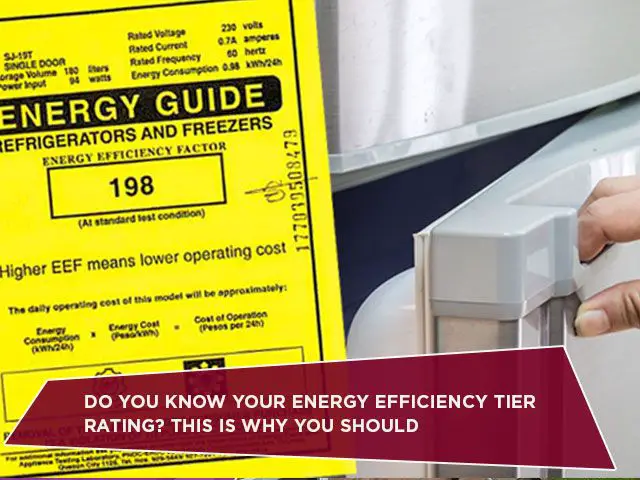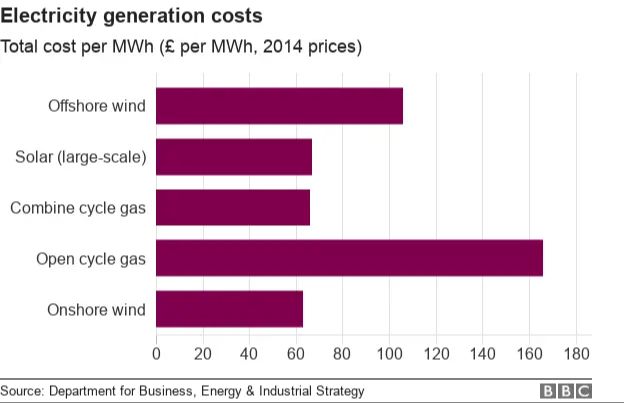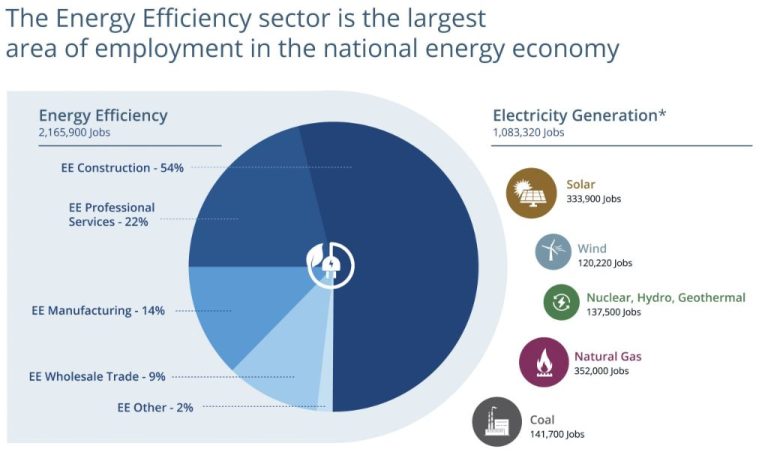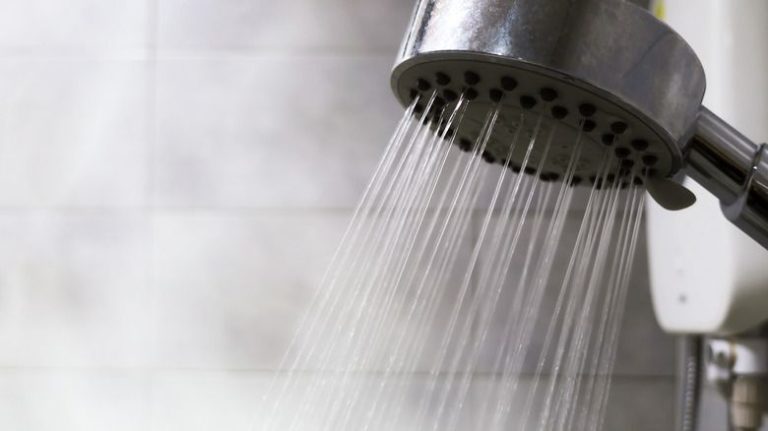How Do I Know My Energy Star Tier?
What is ENERGY STAR?

ENERGY STAR is a program from the U.S. Environmental Protection Agency (EPA) and the Department of Energy. It was created in 1992 to promote energy efficient products to reduce greenhouse gases (1). The program sets standards for energy efficiency by product category and grants the ENERGY STAR certification label to products that meet those standards (2).
The ENERGY STAR label signifies that an appliance meets strict criteria for energy efficiency set by the EPA. Qualifying products must deliver the same or better levels of performance as comparable models while using less energy (3). For example, an ENERGY STAR certified refrigerator uses at least 10% less energy than the minimum federal standard (1). The blue ENERGY STAR label helps consumers identify energy efficient models when shopping for appliances.
Why ENERGY STAR Matters
ENERGY STAR certified products offer significant benefits for consumers, businesses, and the environment. According to the Environmental Protection Agency’s website ENERGY STAR Impacts, choosing ENERGY STAR products can help save money, reduce energy use, and protect the environment.
Most importantly, ENERGY STAR products save consumers money on utility bills. Appliances like refrigerators, dishwashers, and clothes washers that earn the ENERGY STAR rating use 10-50% less energy than standard models. This translates into significant savings on electricity costs over the lifetime of the appliance.
In addition, ENERGY STAR products consume less energy during operation. The EPA estimates that ENERGY STAR certified products helped Americans save more than 500 billion kWh of electricity in 2020 alone. Reduced energy demand helps improve grid reliability and limit the need for additional power plants.
Finally, by using less energy, ENERGY STAR certified products generate fewer greenhouse gas emissions from power plants. The EPA calculates that ENERGY STAR and its partners have reduced CO2 emissions by over 5 billion metric tons since 1992 – equivalent to the annual emissions of over 70 million homes’ electricity use.
In summary, choosing ENERGY STAR certified appliances and electronics is a simple way for consumers to save money, reduce energy waste, and make choices that are better for the environment.
Checking the EnergyGuide Label
The EnergyGuide label is required by the Federal Trade Commission (FTC) to provide consumers with an estimate of the product’s energy consumption and efficiency. You can find the EnergyGuide label on most major home appliances like refrigerators, clothes washers, dishwashers, and room air conditioners (FTC).
The EnergyGuide label is usually located on the front or side of an appliance and provides the following key information:
- Estimated yearly operating cost based on national average costs for electricity and gas
- The range of operating costs for similar models
- The energy consumption or energy efficiency rating
Knowing how to read the EnergyGuide label allows consumers to compare the energy use and operating costs of appliances as part of the shopping process (DOE). The label aims to help consumers choose more energy efficient models that align with their needs and budget.
ENERGY STAR Tiers
The ENERGY STAR program developed a tiered rating system to help consumers identify the most efficient products that exceed minimum requirements. The tiers signify increasing levels of energy efficiency.
There are three ENERGY STAR efficiency tiers:
Tier 1 – Standard Efficiency: Products meet the minimum requirements to be ENERGY STAR certified. This is the baseline tier.
Tier 2 – Most Efficient: Products rank among the top 25% most efficient available on the market. They represent advanced energy efficiency levels.
Tier 3 – Most Efficient: Reserved for the top performing products that rank in the top 5-10% for energy efficiency. They are the highest efficiency products available (CEE Tiers and ENERGY STAR).
For example, an ENERGY STAR certified refrigerator would be Tier 1, while an ENERGY STAR Most Efficient refrigerator would be Tier 2 or 3.
Tier 1 – Standard Efficiency
Tier 1 products meet the minimum federal energy efficiency standards set by the Department of Energy. This is the least efficient tier in the ENERGY STAR program (List of ENERGY STAR Energy Efficient Products).
To qualify for Tier 1, products must have an EnergyGuide label showing they meet but do not exceed federal standards. Tier 1 signifies basic energy efficiency, but not optimal savings (CEE Tiers and ENERGY STAR).
With Tier 1 appliances, customers can expect lower energy bills compared to models not certified by ENERGY STAR, but not maximize energy and cost savings. Still, purchasing Tier 1 products is better than choosing non-compliant options.
Tier 2 – Most Efficient
Tier 2 products exceed the minimum ENERGY STAR standards and represent the top 10-25% most energy efficient models available. To qualify for Tier 2, products must use 10-25% less energy compared to standard models that just meet the federal minimum requirements.
According to the Consortium for Energy Efficiency (CEE), Tier 2 recognizes products that “achieve significant additional energy savings over current ENERGY STAR levels while still representing a large portion of models available for purchase.” For example, ENERGY STAR dishwashers use around 3-5 gallons of water per cycle, while Tier 2 dishwashers use 2.5-3.5 gallons.
Tier 2 products represent a “sweet spot” – they go beyond basic efficiency levels to provide meaningful energy savings, but are still broadly available from major manufacturers at reasonable prices. Tier 2 ensures that high efficiency continues to be accessible and affordable.
Tier 3 – Most Efficient
Tier 3 products are the most energy efficient models available. To qualify for Tier 3, products must significantly exceed minimum government standards and perform at levels equivalent to the top 5% of models available in terms of energy efficiency.
Specifically, Tier 3 products must use at least 25% less energy than standard models that just meet minimum governmental standards. For example, if the minimum ENERGY STAR specification requires a product to consume no more than 100 kWh per year, a Tier 3 qualifying product must use 75 kWh or less.
By far exceeding energy efficiency requirements, Tier 3 products represent the leading edge in energy savings. They incorporate the latest energy-saving technologies and innovations to maximize performance and savings beyond conventional designs.
Tier 3 designation provides consumers with a way to identify the very best energy-saving models. It also encourages manufacturers to push the limits of efficiency in their products.
Some examples of products that may qualify for Tier 3 are highly efficient clothes washers, refrigerators, air conditioners, and heat pump water heaters. Visit the ENERGY STAR website for an up-to-date list of qualifying Tier 3 products.
Finding your product’s tier
The quickest way to find your product’s ENERGY STAR tier level is to check the manufacturer’s specifications. Most appliance makers will clearly state the tier level on their website or in product manuals. Simply search for your specific model number to locate this detail.
You can also use online databases like the EPA’s ENERGY STAR Product Finder to look up your appliance by make and model. After entering the details, any certification info and tier rating will be shown. The ENERGY STAR website contains a comprehensive list of all products that meet the various tier criteria.
Knowing the exact ENERGY STAR tier for your appliance or electronics enables you to understand its efficiency level. This helps inform smart purchase decisions and ensure you maximize energy savings over time. With more brands clearly indicating tiers on packaging and websites, it’s becoming simpler for consumers to choose the most efficient models.
Maximizing savings
When shopping for new appliances, opting for models in higher ENERGY STAR tiers can lead to greater energy savings over time. However, it’s also important to balance efficiency with the features you need.
According to the EPA, typically Tier 2 appliances are 10 percent more efficient than standard models, while Tier 3 models are 20 percent more efficient. This means Tier 3 washers may use 25-30 percent less energy and 33 percent less water than a standard model.
While the higher price tag of more efficient models may seem daunting at first, the energy savings can make up for the difference over time. Focus on the total lifetime cost rather than just the initial purchase price.
That said, don’t sacrifice features you need just for a higher tier appliance. Find the right balance between efficiency, price, and functionality for your household needs. You may not need the absolute highest tier if a lower one has the size, cycles, settings, connectivity, or other options you require.
Using ENERGY STAR’s comparison tool can help you weigh the pros and cons of different models as you shop. Just input your requirements to see which certified appliances match your needs and budget.
Future developments
The ENERGY STAR program is continuously working to drive further improvements in energy efficiency over time. As technology advances allow appliances, electronics, and other products to achieve greater energy savings, ENERGY STAR periodically revises its specifications and criteria.
In the future, we may see the introduction of new, more stringent ENERGY STAR tiers to motivate the development of super-efficient products. The EPA collaborates closely with manufacturers, retailers, and other stakeholders to determine appropriate updates that will encourage innovation while maintaining feasibility.
By raising efficiency criteria over time, the ENERGY STAR program aims to eliminate the least efficient products from the market. This process drives steady progress towards a clean energy future with minimized environmental impact from the products we use every day.





